#vesuviana
Explore tagged Tumblr posts
Text
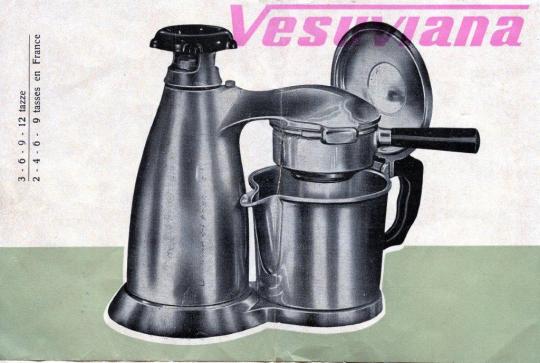
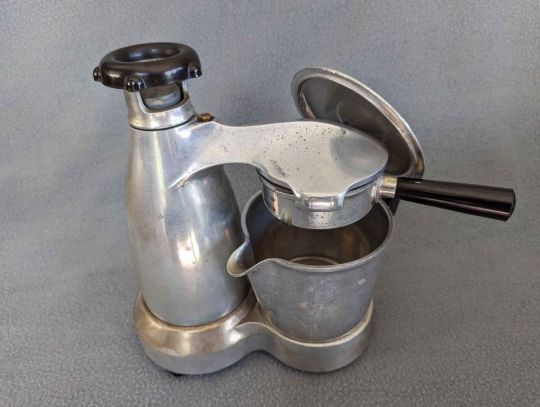
#Coffee#Espresso#Coffee Machine#Coffee Maker#Coffeemaker#Espresso Machine#Vesuviana#Italy#Italian#Italia#Vintage#Just missed out on buying a 9 cup model locally
2 notes
·
View notes
Text
Una rara photo di Frida Kahlo in CircumVesuviana... da notare la tipica espressione gioiosa da passeggero abituale.

611 notes
·
View notes
Text
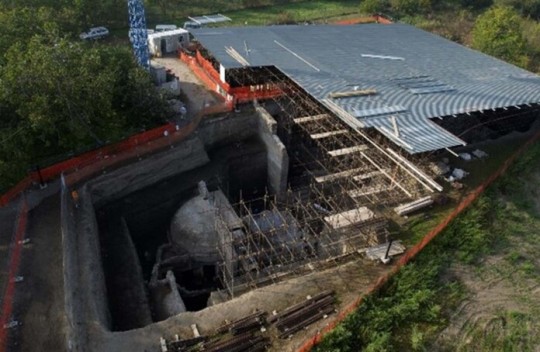
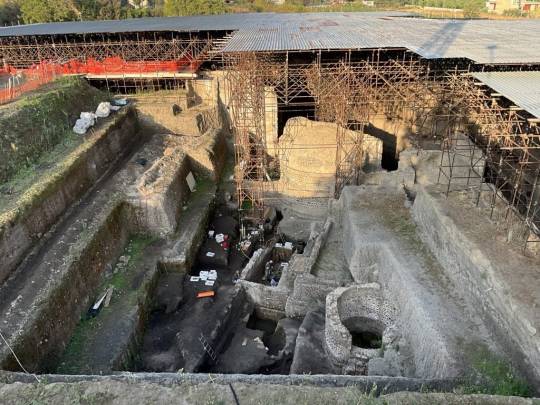
Archaeologists May Have Found the Villa Where the Roman Emperor Augustus Died
Excavations north of Mount Vesuvius revealed Roman ruins buried by the eruption in 79 C.E.
After decades of excavations in Italy, archaeologists have discovered a villa that could have belonged to Augustus, the first emperor of Rome.
Since 2002, researchers from the University of Tokyo have been exploring Somma Vesuviana, an archaeological site north of Mount Vesuvius, the volcano that extinguished the ancient city of Pompeii in 79 C.E. Recently, these excavations revealed a structure destroyed by the same eruption.
Researchers think this site could be Augustus’ lost villa. According to the team, Roman sources say Augustus died in a villa north of the mountain in 14 C.E., but the building’s location has never been verified.
“There is a description that [the villa] was consecrated … but its existence has not been identified to this day,” says Mariko Muramatsu, leader of the university’s Somma Vesuviana excavation project, in a translated statement. “In recent years, our excavations have uncovered parts of buildings that were buried during the eruption of Mount Vesuvius in 79 C.E. This means that for the first time in this area, a building contemporary with the villa of Emperor Augustus has been found with scientific support.”
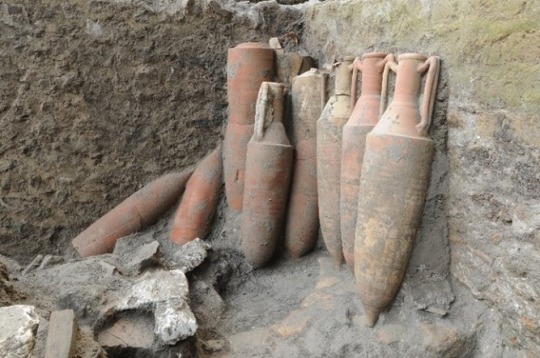
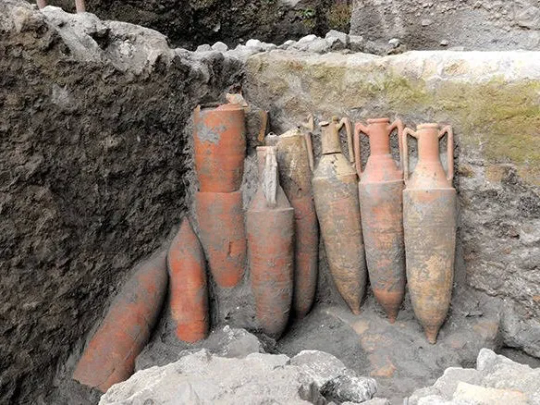
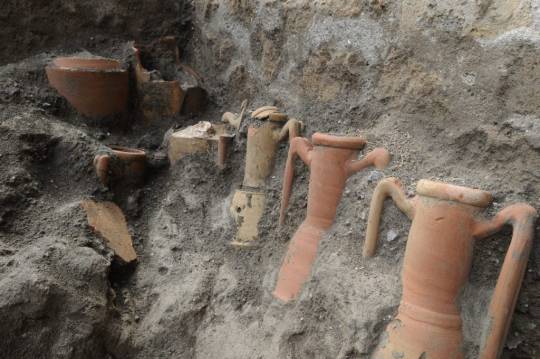
The ruins in question actually include two separate villas: one buried in the 79 C.E. eruption and another built on top of it later, reports All That’s Interesting’s Amber Breese. Until recently, researchers had only been aware of the newer structure.
In the older villa, archaeologists identified four rooms containing portions of wall, roof tiles and other ruins. In one chamber, researchers discovered 16 amphorae—tall ancient Roman jars—which were used to transport and store wine. In another, they found “large amounts of charcoal and ash” from a fire they believe was used to heat water for a private bathhouse, “indicating that the villa belonged to a person of great wealth and influence,” per All That’s Interesting.
In the mid-second century, people began constructing new buildings atop the site of the buried villa, using its footprint as a guide. The new construction featured a grand hall filled with brick arches, marble columns and marble statues. Around the fourth century, the site transformed again, becoming a large-scale wine production site. This villa was preserved by another eruption of Mount Vesuvius in 472.
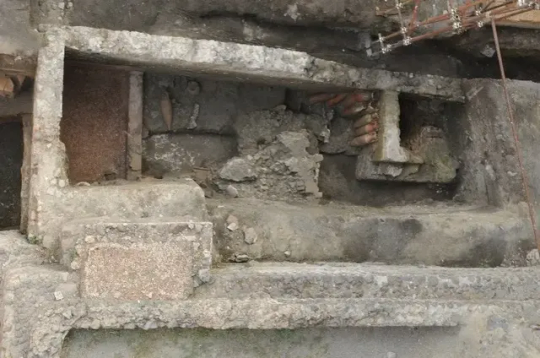
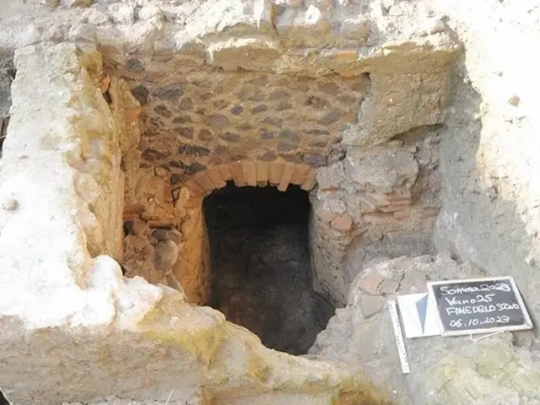
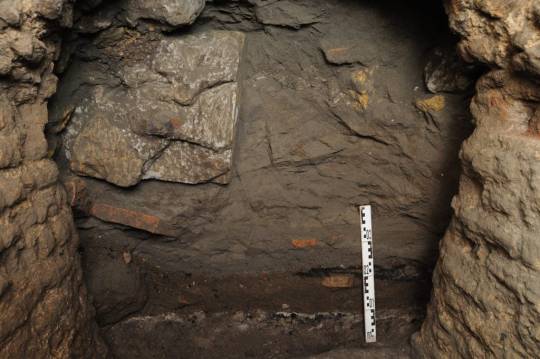
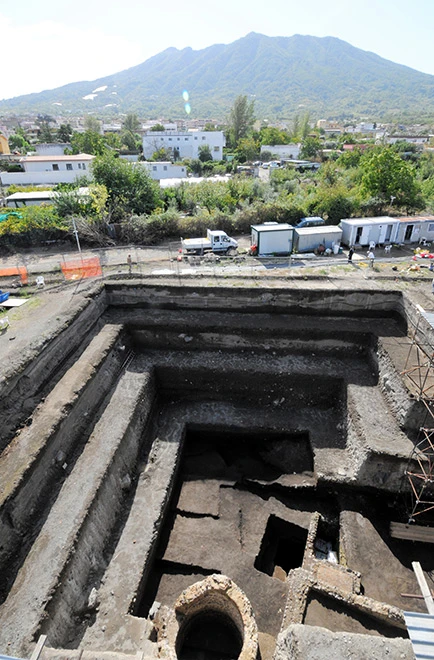
Historians previously thought the damage from Vesuvius’ 79 C.E. eruption at this site was “minor compared to the southeast of the mountain,” but the older villa’s ruins suggest “there was also a destructive impact in this area,” reports La Brújula Verde’s Guillermo Carvajal. Researchers think the structure collapsed due to pyroclastic flows—dense, fast masses of ash and gas expelled by the volcano.
The researchers theorize that Augustus could have once occupied the older villa. Born Gaius Octavius Thurinus, the young man was granted the name Augustus—the “exalted one”—by the Roman Senate in 27 B.C.E. While Augustus didn’t use the title of “emperor” in his lifetime, he was a pivotal figure in Roman history who more than doubled the empire’s size during his 40-year reign.
Researchers from the Somma Vesuviana excavation project hope to expand the scale of their digs. As Muramatsu says in the statement, further exploration could reveal “another Pompeii,” helping historians “trace the achievements of Emperor Augustus and the beginnings of the Roman Empire.”
By Sonja Anderson.
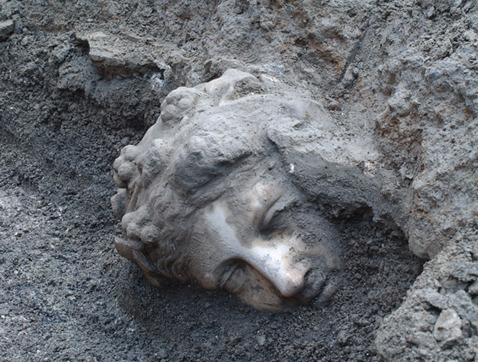
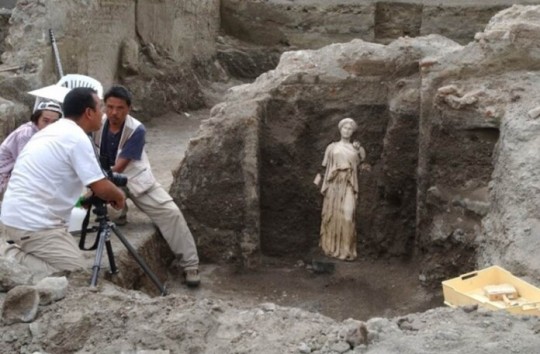
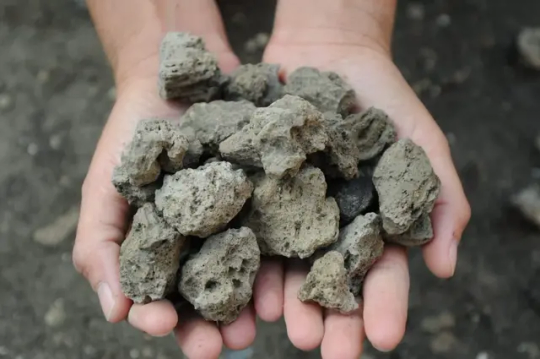
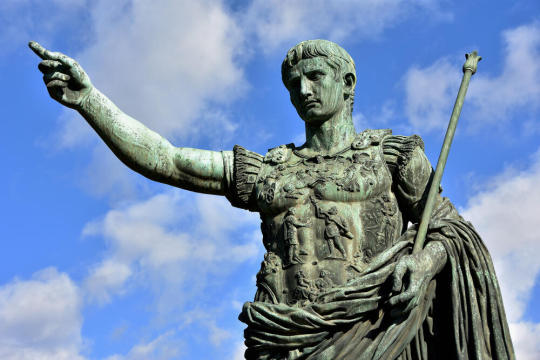
#Roman Emperor Augustus#Archaeologists May Have Found the Villa Where the Roman Emperor Augustus Died#Somma Vesuviana#Mount Vesuvius#ancient artifacts#archeology#archeolgst#history#history news#ancient history#ancient culture#ancient civilizations#roman history#roman empire#roman emperors#roman art
133 notes
·
View notes
Text

Via Collegiata, Somma Vesuviana, Campania.
18 notes
·
View notes
Text
I was busy thinkin bout

#frambles#i bro sono a sorrento#forse hanno preso pure la vesuviana per arrivarci#hws romano#hws finland#hetalia
32 notes
·
View notes
Text
Excerpt:
After decades of excavations in Italy, archaeologists have discovered a villa that could have belonged to Augustus, the first emperor of Rome.
Since 2002, researchers from the University of Tokyo have been exploring Somma Vesuviana, an archaeological site north of Mount Vesuvius, the volcano that extinguished the ancient city of Pompeii in 79 C.E. Recently, these excavations revealed a structure destroyed by the same eruption.
Researchers think this site could be Augustus’ lost villa. According to the team, Roman sources say Augustus died in a villa north of the mountain in 14 C.E., but the building’s location has never been verified.
“There is a description that [the villa] was consecrated … but its existence has not been identified to this day,” says Mariko Muramatsu, leader of the university’s Somma Vesuviana excavation project, in a translated statement. “In recent years, our excavations have uncovered parts of buildings that were buried during the eruption of Mount Vesuvius in 79 C.E. This means that for the first time in this area, a building contemporary with the villa of Emperor Augustus has been found with scientific support.”
/endquote
#smithsonian#augustus#emperor augustus#villa#ancient villa#roman emperors#university of tokyo#classical#classical antiquity#classical studies#archaeology#archaeological site#archaeological discoveries#somma vesuviana#excavation#amphora#amphorae#history
5 notes
·
View notes
Text

#il mio personale benvenuto al sir lewis hamilton in ferrari#bisogna sapere che qui ci sono dei miti da mantenere#quando sei libero lewis vuoi passare pure un attimo negli uffici eav e sistemi un paio di cose ? fammi sapere grazie#come ho detto alla mia amica la notizia si affermerà nella mia mente direttamente a marzo. per ora lewis capotreno della vesuviana linea#napoli poggiomarino. mi fa morire sto meme#bene ora è il momento di pensare a napoli juve. il mio lavoro qui è finito
1 note
·
View note
Text
Il Massimo del Gioco
L’infanzia di Massimo Troisi raccontata dall’amico Alfredo Cozzolino, quando il bello del gioco era la semplicità di Stanislao Scognamiglio SAN GIORGIO A CREMANO | CITTÀ METROPOLITANA DI NAPOLI – Nella Biblioteca di cultura vesuviana Sacerdote Giovanni Alagi, sita al civico 20 di Via Cavalli di Bronzo, alle ore 18 di lunedì 14 ottobre, accoglierà la presentazione del libro Il Massimo del Gioco.…
#Alfredo Cozzolino#Biblioteca di cultura vesuviana#Il Massimo del Gioco. L’infanzia con Troisi raccontata da un amico#Massimo Troisi#San Giorgio a Cremano
0 notes
Text

House of Venus in the Shell, peristyle. Pompeii
Photo courtesy of Laura Noviello / Anima Vesuviana- IG
#pompeii#roman domus#archaeology#pompeii archaeological park#archaeological site#ancient rome#roman empire
386 notes
·
View notes
Text
in other news amicy è una notizia a che io sia riuscita a prenderla la vesuviana
3 notes
·
View notes
Text
una cosa che su tutte mi fa imbestialire, mi fa vedere quella vita non classificata, animale, che è in me è la diamine di vesuviana. ma perché mai non si comprende che un punto essenziale per la transizione ecologica è il trasporto pubblico? ma perché devo aspettare 40 Min la mattina tra un treno e l'altro per andare a lavorare stando con diecimila cristiani nello stesso vagone e pagare un biglietto la bellezza di tre euro?
7 notes
·
View notes
Text
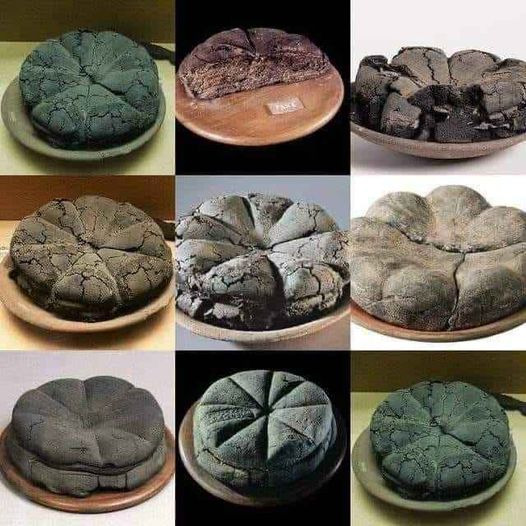
Pani carbonizzati provenienti dagli scavi di Pompei ed Ercolano.
Ottantuno di questi pani, a volte frammentati sino a diventare finissima polvere, vennero trovati, nel 1862, nel forno cosiddetto di «Modesto», nella camera di cottura ancora sigillata da una porticina di ferro. Altri resti furono scoperti ogni qualvolta ci si imbatteva in un forno.
Tutto il materiale recuperato tra Pompei e Ercolano venne poi trasportato al Museo archeologico di Napoli per essere conservato nei suoi depositi. Tranne quei pochi pani, esposti nei musei, che erano rimasti quasi intatti o che i restauratori dell'epoca si erano ingegnati a ricostruire, spesso mettendo malamente assieme i pezzi
Il pane consumato in area vesuviana, nel I secolo dopo Cristo, aveva unna caratteristica: era segnato in maniera da poter essere spezzato e diviso facilmente in spicchi. Venica chiamato Panis quadratus.
Con circa trenta panifici pubblici, i pistrina, funzionanti, oltre a quelli casalinghi, Pompei dimostra, dunque, come il pane fosse l'alimento principe dell'epoca.
Disposti lungo gli assi di scorrimento principali (Via Stabiana, Via dell'Abbondanza, Via Consolare) i pistrina producevano numerosi tipi di pane: farreus, di farro; siligineus, di prima qualità; secundarius, di seconda qualità; plebeius, meno raffinato; militaris, dei legionari; nauticus, per i marinai; furfureus, consumato dai poveracci o dai cani.
Testo di Carlo Avvisati, tratto da: il mattino it - napoli-cultura-pompei.
5 notes
·
View notes
Text

In questi giorni in tanti ci siamo ricordati di Melania Rea, la sua bimba Vittoria oggi ha tredici anni e porta il cognome della sua mamma, dopo averne fatto richiesta in tribunale. Vittoria vive con i nonni a Somma Vesuviana, viene descritta come una ragazzina determinata e forte, la gioia della famiglia Rea, che non dimentica la dolce Melania. Lo zio Gennaro qualche tempo fa ha voluto dedicarle un post molto toccante su Facebook, ve lo riporto qui. Ricordiamoci quanto sia ancora troppo dura per noi donne, ricordiamoci quanto meritiamo e non dimentichiamo mai di darci sostegno reciproco. Vinciamo ogni esitazione, ogni vecchio cliché e ricordiamoci di stare sempre dalla parte delle donne e quindi dalla nostra. Difendiamoci, difendiamole.
tizianacerra.com
“Sono trascorsi 12 anni, 12 anni in cui il dolore dentro il nostro cuore non diminuisce mai. In questo giorno la mente ripercorre quei momenti dalla scomparsa al ritrovamento. Momenti di speranza che immediatamente vennero sopraffatti da momenti di disperazione. A Te purtroppo non è concesso di ritornare tra di noi, dalla Tua bimba (oggi una bellissima ragazza), mentre al tuo carnefice viene data questa possibilità e tra qualche anno sarà libero perché qualcuno decise che non ci fosse crudeltà nelle 35 coltellate ricevute. Questa è la giustizia. Cara Melania da lassù proteggi sempre la Tua famiglia e la Tua Vittoria”
Gennaro Rea
#femminicidio#famiglia#amore#violenza#donna#donne#il coraggio delle donne#donneitaliane#il cerchio delle donne#donne piccole come stelle#giù le mani dalle donne#frasi forza#amarsi#tumblr#coraggio#Melania Rea#giulia tramontano#frasi tumblr#resilienza#amore tumblr#vita#universo#basta#vivere#napoli#ikigai#mai più#verità nascoste#frasi sulla verità#verità
19 notes
·
View notes
Text
Zaoooooo…Buon Mercoledì 👽
La vita è come la Vesuviana..non sai mai quello che ti capita..✌️

4 notes
·
View notes
Text
Dema, Ciarambino: da Adler la scelta giusta, ora confronto e impegno
«Apprendo con grande favore l’annuncio dei sindacati al termine dell’incontro al Mimit sulla vertenza Dema: la Adler ha ritirato il piano industriale presentato in precedenza, che prevedeva un inaccettabile ridimensionamento degli stabilimenti campani di Somma Vesuviana e Paolisi, con annessa “dismissione” della forza lavoro – dichiara Valeria Ciarambino, Vicepresidente del Consiglio regionale e…
0 notes
Text
0 notes